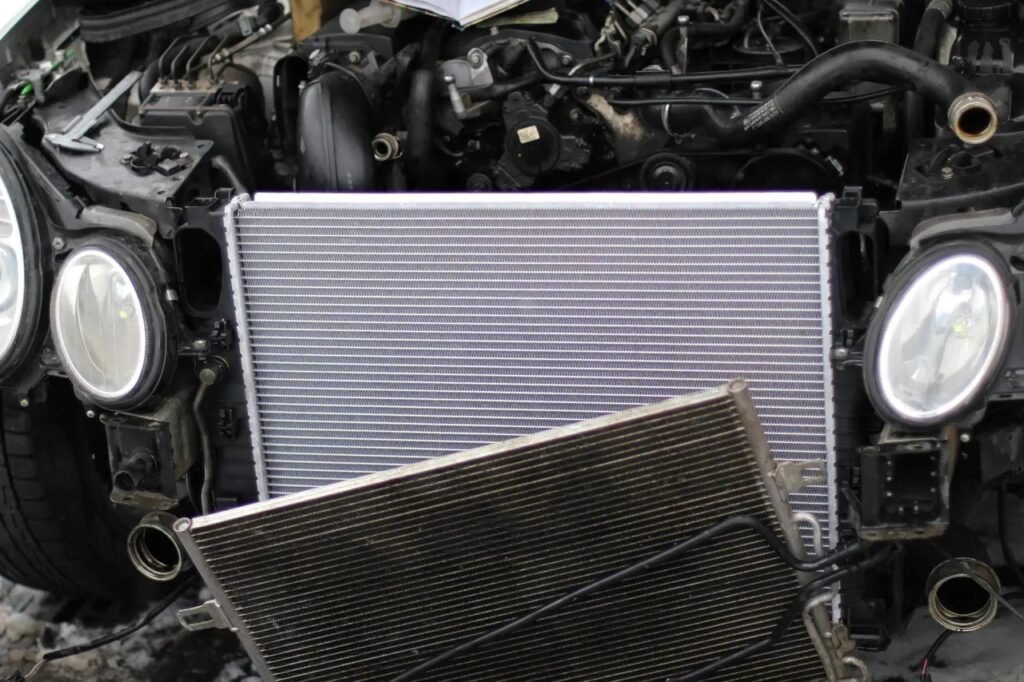Let’s be real: when most people think about car maintenance or performance upgrades, they’re picturing roaring exhausts, shiny wheels, or powerful engines. But here’s a little secret—what keeps your vehicle running smoothly (and safely) are often the parts you don’t see or hear… until something goes wrong.
That odd rattle under your car? Could be a busted exhaust hanger. That slow build-up to overheating? You might be ignoring your cooling system fittings. And that leaky exhaust that sounds like a chainsaw? Could be time for a cat clamp replacement.
In this post, we’re giving center stage to the silent workhorses of your car—the small components that connect, seal, suspend, and cool your ride. If you care about a quiet cabin, a healthy engine, and avoiding costly repairs, read on.
Why Small Parts Make a Big Difference
While engines and turbos get the spotlight, parts like clamps, hangers, and fittings do the hard work of keeping things in place and functioning properly. Think of them like the tendons and ligaments in your body—supporting motion, maintaining stability, and preventing breakdown.
Here’s why they matter:
-
They prevent system failures (cooling, exhaust, emissions)
-
They enhance driving comfort by reducing vibration and noise
-
They extend the life of more expensive parts
Let’s start under the car with one of the simplest, yet most crucial components: the exhaust hanger.
The Unsung Hero: Exhaust Hanger
Ever hear a clunking or rattling sound coming from under your car when you hit a bump? That’s often a failed exhaust hanger.
An exhaust hanger is a small but mighty piece of rubber or metal that suspends your exhaust system under the car. Without it, your exhaust pipes would be dragging, banging, or vibrating—none of which are good news.
What a Worn Exhaust Hanger Can Cause:
-
Exhaust misalignment or sagging
-
Annoying noises or vibrations
-
Strain on other exhaust components (like your catalytic converter)
-
Potential ground contact and damage
Pro Tip: Inspect your exhaust hangers during every oil change. If they’re dry, cracked, or stretched out, replace them before they fail entirely.
Cool It Down: Why Cooling System Fittings Matter
If your engine is the heart of your car, the cooling system is its circulatory system. Cooling system fittings are the connectors that hold coolant hoses in place and seal them tightly to prevent leaks.
These fittings may seem minor, but a loose or corroded one can lead to:
-
Coolant leaks
-
Engine overheating
-
Loss of pressure in the cooling system
Modern vehicles use various materials for cooling system fittings—plastic, brass, aluminum—and each has its pros and cons. Upgrading to performance-grade fittings can help improve durability, especially in high-heat environments or under high load conditions.
Quick Table: Comparing Exhaust Hanger, Cooling System Fittings & Cat Clamp
| Part | Function | Signs It’s Failing | When to Inspect/Replace |
|---|---|---|---|
| Exhaust Hanger | Holds exhaust in place | Rattling, sagging exhaust | Every oil change or 10,000 miles |
| Cooling System Fittings | Connects and seals coolant hoses | Coolant leaks, overheating | Every coolant service or 30,000 miles |
| Cat Clamp | Seals catalytic converter to exhaust pipe | Exhaust leaks, increased engine noise | If you smell exhaust or hear noise |
Clamp It Right: Meet the Mighty Cat Clamp
Now let’s talk about one of the most overlooked (yet absolutely critical) components—cat clamps.
The cat clamp (short for catalytic converter clamp) secures the catalytic converter to the rest of your exhaust system. If it loosens or corrodes, exhaust gases can leak before reaching the muffler, leading to a loud, toxic mess—not to mention failed emissions tests.
Signs You Might Need a New Cat Clamp:
-
Loud, raspy exhaust sound
-
Smell of exhaust inside the cabin
-
Decreased fuel efficiency
-
Failed emissions inspection
Cat clamps are especially important if you live in areas with rust-prone roads or salted highways. Stainless steel options offer better resistance to corrosion and heat fatigue.
Real Talk: Why These Parts Are Worth Your Attention
Let’s face it, most of us won’t post a photo of our new cooling system fittings on Instagram. But here’s the reality: these parts are foundational to your car’s performance, safety, and longevity.
Here’s Why Investing in These Components Pays Off:
-
Peace of Mind: No one likes the surprise of an overheating engine or sagging exhaust.
-
Better Performance: Stable systems perform more efficiently, especially under stress.
-
Cost Savings: A $15 exhaust hanger replacement is a lot cheaper than a $700 muffler repair due to misalignment.
When to DIY and When to Call a Pro
Some of these parts—like exhaust hangers and cat clamps—are simple enough for a weekend DIY project with basic tools. Others, like high-pressure cooling system fittings, might be better left to a pro.
DIY-Friendly:
-
Exhaust hanger replacement
-
Cat clamp install (if accessible and no welding required)
Leave to the Pros:
-
Coolant fitting replacement near engine or radiator
-
Exhaust work requiring welding or pipe cutting
If you’re unsure, ask your mechanic to check these during routine service. Prevention is always cheaper than a tow truck.
Wrapping Up: Don’t Let the “Small Stuff” Slide
It’s easy to overlook the hidden components in your vehicle. But the exhaust hanger, cooling system fittings, and cat clamp are working overtime to keep your ride quiet, cool, and compliant. Neglecting them might not stop your engine tomorrow—but it could cost you big down the line.
So next time you pop the hood or slide under your car, give some respect to the parts that hold it all together. A little attention now can mean a smoother, safer, and quieter ride for years to come.
Want to Stay Ahead of Vehicle Issues?
Add these three checkpoints to your maintenance checklist—and drive with confidence every mile.
Need a guide for choosing high-performance replacements or recommendations on brands? I can help with that too—just ask!







